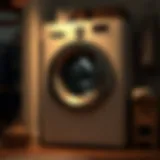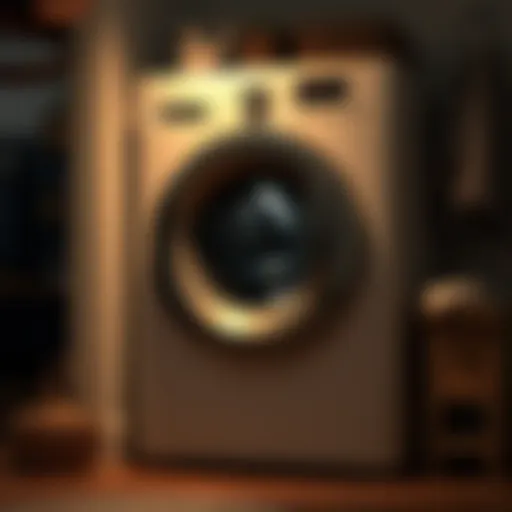Enhancing Your Front Garden with a Small Fence
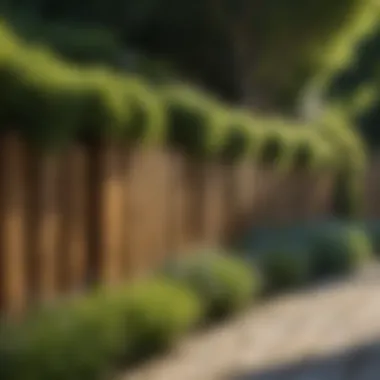

Intro
Key Insights and Trends
Current Trends in Garden Design
Homeowners are leaning towards clean, modern designs that complement their architecture. The use of natural materials like wood is prevalent, as they blend well with greenery. Vertical gardens are also gaining traction, presenting a space-saving alternative for urban environments. These trends underline a shift toward sustainable practices and minimalistic approaches in gardening. Additionally, the adoption of eco-friendly materials is becoming more common.
Popular Gardening Techniques of the Season
There are several techniques that homeowners are embracing this season:
- Container gardening: Space-efficient and versatile, it adds variety to any garden layout.
- Native plants usage: Focusing on plants that thrive in the local ecosystem is environmentally conscious and requires less water and maintenance.
- Edible landscaping: Blending ornamental and edible plants allows homeowners to enjoy both beauty and utility in their gardens.
Practical Tips to Incorporate a Small Fence
Once you decide to add a small fence to your front garden, here are some practical tips to ensure a successful installation:
Step-by-Step Guide
- Determine the Purpose: Understand why you want a fence. Is it for aesthetic appeal, privacy, or property demarcation? This will guide your design choice.
- Select the Material: Common options include wood, vinyl, and metal. Each material offers unique advantages, such as durability and maintenance requirements.
- Design and Style: Choose a design that complements your home’s architecture. Several styles exist, including picket, lattice, and modern minimalistic.
- Check Local Regulations: Before proceeding, consult local zoning laws or homeowner association guidelines. Ensure you comply with any height restrictions or design approvals.
- Installation: Proper installation is crucial. If you’re not confident in your DIY skills, consider hiring a professional. A poorly installed fence can cause ongoing issues.
Maintenance Tips
To keep your small fence in optimal condition, consider the following:
- Regularly check for signs of wear and tear.
- Clean the fence to prevent mold and algae buildup, especially in damp climates.
- Apply a weatherproof sealant annually to wood fences for increased durability.
A well-maintained fence not only enhances the visual appeal of your garden but also contributes to the longevity of the structure.
By understanding these insights and practical tips, homeowners can effectively incorporate a small fence into their front garden, adding both functionality and beauty to their outdoor space.
Foreword to Small Fences
In the realm of landscape design, the incorporation of small fences into front gardens represents a critical element. This choice can drastically alter the appearance and functionality of the outdoor space. Small fences not only define boundaries but they also serve multiple purposes, enhancing both security and aesthetics. Homeowners considering this addition should understand the significance of selecting an appropriate style that complements their garden designs.
Small fences act as subtle dividers between private space and public areas. They can create a sense of enclosure without overwhelming the garden. This distinction is particularly beneficial for front gardens, where visibility plays a crucial role. A well-chosen fence can elevate the overall design, provide a backdrop for planting, and even influence the perception of the home itself.
Moreover, small fences help in establishing a welcoming atmosphere. They can outline pathways, guide visitors, and direct attention to specific garden features. By using varied materials and styles, homeowners have the opportunity to personalize the look. The careful incorporation of such fences fosters a harmonious relationship between the house and its surrounding landscape.
Defining the Purpose of Fencing
The purpose of fencing in a garden context goes beyond mere aesthetics. Small fences can fulfill practical needs while contributing to the visual appeal of the space. Here are several purposes worth considering:
- Boundary Definition: Clearly mark the edges of your property, maintaining privacy and preventing encroachment by neighbors or passersby.
- Safety and Security: Provide a secure environment for children and pets while adding a layer of protection against unwanted animals.
- Aesthetic Appeal: Enhance the visual interest of the garden by creating texture and structure in the landscape.
- Plant Support: Offer a framework for climbing plants or vines, integrating green elements into the fencing design.
Understanding these purposes is essential in the planning stages. It leads to informed decisions about style, material, and placement suitable for one’s specific needs.
Historical Context of Garden Fencing
The evolution of garden fencing reveals much about human interaction with the landscape. Historically, fencing served a dual purpose: protection and demarcation. In ancient civilizations, solid walls were common, created to secure wealth or establish territory. However, as design sensibilities transformed, so did the function and style of fencing.
During the Victorian era, ornamental gardens flourished. Intricate wrought iron and picket fences became fashionable, reflecting both wealth and taste. These designs were less about protection and more about aesthetics and pride.
In more recent years, garden fencing has adapted to contemporary designs. Minimalist approaches emphasize clean lines and functionality. Materials have diversified, with options such as wood, metal, and composite becoming prevalent. Each evolution in fencing conveys cultural values and influences on garden design. This context enriches our understanding of why small fences are a significant consideration in modern front gardens.
Design Considerations
Incorporating a small fence in your front garden serves not only practical purposes but also enhances the visual appeal of your home. Understanding design considerations is essential in making the right choices that align with your personal taste and the overall style of your property. A well-planned fence can delineate boundaries, provide privacy, and add an aesthetic charm. This section will discuss various elements that play a crucial role in the design of your front garden fence, ensuring you make informed and thoughtful decisions.
Assessing Your Garden Style
Before deciding on a fence, evaluate the existing style of your garden. Take a good look at the plants, pathways, and other landscape features. Is your garden modern, traditional, or perhaps cottage-like? Each style has distinct characteristics which will influence your choice of fencing material and design. For instance, a sleek metal fence can complement a contemporary garden, while a wooden picket fence may suit a classic or rustic setting better.
The surrounding architecture also matters. The color, texture, and lines of your house should guide your selection. An elegant brick home might pair well with a wrought iron fence, whereas a timber-clad house could harmonize with cedar fencing. Think about continuity in design throughout the outdoor space.
Choosing Appropriate Height and Width
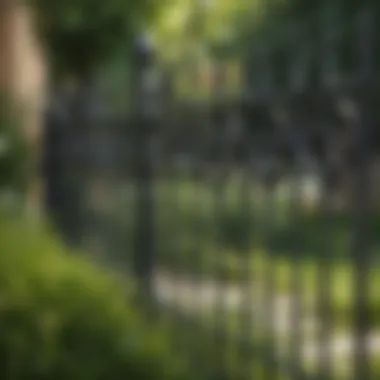

The dimensions of your fence should cater to its intended purpose while harmonizing with your garden's design. A taller fence may add privacy and define boundaries more strongly, but it could also overwhelm your garden if not proportionate.
Common heights for small fences vary but generally range from 3 to 4 feet. Higher fences can create a sense of enclosure but ensure they don’t block views excessively. A width of 2 to 3 feet is standard, which allows sufficient decoration or plantings near the base without making the fence feel bulky.
Also, consider local regulations regarding height restrictions to avoid putting up a structure that may not comply with zoning laws.
Color Coordination with Existing Landscaping
Color is a crucial factor in achieving visual harmony. The fence should complement rather than clash with your garden's palette. If your garden is filled with vibrant blooms, a neutral-colored fence can provide a backdrop that allows the flowers to stand out.
Alternatively, if you prefer a more striking look, a bold color could highlight the fence itself, creating a focal point within the garden. Keep in mind that earth tones generally work well with most landscapes, providing timeless appeal. Additionally, consider painting or staining a wooden fence to match or contrast with your home’s exterior.
"A well-designed fence is like the frame of a masterpiece; it accentuates the beauty of what lies within."
Remembering these factors will help you to create a cohesive and attractive look for your property, allowing your small fence to shine as a key feature of your front garden.
Material Selection
Choosing the right material for a small fence is essential. This selection affects not just the aesthetics of the garden but also the longevity and function of the fencing. Each material has its unique characteristics, advantages, and drawbacks. Understanding these aspects will empower homeowners to make informed decisions that align with their vision.
Wooden Fences
Benefits of Wood
Wooden fences are a popular choice for many homeowners. It tends to blend well with natural surroundings. The charm of wood can add warmth and character to a front garden. Additionally, wooden fences are versatile. They can be customized easily, from height to design, meeting various style preferences.
One key characteristic of wood is its ability to be painted or stained, allowing for color adjustments over time. This flexibility enhances the overall appeal of the yard. However, wood does require maintenance, such as sealing and painting, to protect against weather elements. Despite this, its aesthetic benefit remains a significant draw for many.
Typical Finishes and Treatments
Finishes and treatments for wooden fences contribute significantly to their durability. Common options include pressure treatment and sealant applications. Pressure-treated wood resists decay and insect damage, prolonging the fence's lifespan. Sealants protect against moisture, preventing warping or splitting.
Choosing a specific finish is also a matter of personal taste. Clear finishes show off the wood's natural beauty, while paints offer a chance to express one’s style. However, some treatments require reapplication over time, which can add to maintenance efforts.
Vinyl Fences
Durability and Maintenance
Vinyl fencing has gained popularity due to its durability. It is resistant to various environmental factors like rot, rust, and pests. This means less upkeep is needed, making it an attractive option for homeowners who prefer low-maintenance solutions.
Vinyl is also available in various styles and colors, providing design flexibility. This material can withstand harsh weather conditions, making it a reliable choice. The unique feature here is that it does not require painting or staining, which minimizes ongoing costs. However, some homeowners may find it less aesthetically pleasing compared to natural materials like wood.
Cost Considerations
Cost is a significant factor in fence selection. Vinyl fences often come with a higher initial price point compared to wood. However, their longevity and minimal maintenance needs can offset these costs over time. Homeowners should weigh the upfront investment against long-term savings.
Additionally, installation costs may vary. If hiring a contractor, it is important to get accurate estimates. Considering the overall expenses will provide better clarity on the most economical choice in the long run.
Metal Fencing Options
Wrought Iron
Wrought iron fencing is celebrated for its strength and durability. It offers a classic and elegant look that complements various garden styles. One of the main advantages is its longevity, often lasting many years with proper maintenance.
Despite its sturdiness, wrought iron requires regular painting to prevent rust, depending on the environment. This maintenance aspect should be considered if choosing this material. Nevertheless, its reliability in offering security plus elegance appeals to many homeowners.
Aluminum
Aluminum fences are lightweight and resistant to corrosion, another excellent option for front gardens. They require very little maintenance, as they do not rust or deteriorate like other metals do. This characteristic is particularly beneficial for those living in humid or coastal areas.
Aluminum can mimic the look of wrought iron but often comes at a lower price and with less upkeep. However, it may not support the same level of security due to its weaker structure compared to wrought iron. Homeowners should identify what attributes are most important to their needs.
Alternative Materials
Bamboo
Bamboo is becoming a favorite among environmentally conscious homeowners. It is a sustainable material that grows quickly and is highly versatile. This fencing type adds a unique aesthetic with its natural look.
Bamboo is lightweight and can be easy to work with, making it a viable choice for DIY projects. However, its susceptibility to weather conditions may necessitate regular treatments to maintain its appearance and longevity.


Composite Materials
Composite materials combine wood fibers and plastic to create durable and attractive fencing. This material offers the look of wood but requires less maintenance and can resist rotting and fading.
The unique feature of composite fencing is its ability to withstand various environmental challenges. Homeowners benefit from lower maintenance needs, making it a suitable long-term investment. However, the initial cost may be higher than traditional wood, necessitating careful consideration.
Regulatory Aspects
Incorporating a small fence in your front garden is not just about aesthetics; it brings forward important regulatory considerations. Understanding the local laws and requirements is crucial before carrying out the installation. This part of the article will explore why staying compliant with these regulations is imperative, ensuring that your dream garden is both beautiful and lawful.
Understanding Local Zoning Laws
Local zoning laws dictate how properties are developed and maintained in a given area. These regulations can vary significantly from one municipality to another. Homeowners should familiarize themselves with these laws to avoid potential conflicts or fines. Often, the zoning laws will specify details such as:
- Height Restrictions: Many locales have limits on how tall fences can be.
- Materials Allowed: Some jurisdictions have limitations on the type of materials homeowners can use.
- Setback Requirements: These may define how far the fence should be from the property line.
Being well-informed about these elements helps ensure that your small fence aligns with local expectations. Moreover, consulting the local zoning office can provide clarity on any ambiguities regarding these rules.
Permits and Approvals
Before you begin building your small fence, securing the proper permits may be necessary. The permit process can vary, but it generally serves as a safeguard for both the homeowner and the surrounding community. Here are some key points to consider:
- Permit Requirements: Some regions may require a permit not only for the installation of fences but also for specific materials or project designs.
- Timeline: Obtaining a permit can take time, so planning accordingly is essential to avoid delays.
- Approval Process: Once the application is submitted, local zoning boards or associations may need to review and approve your fence design.
Having the required permits helps you prevent potential legal issues down the line. Besides, it provides peace of mind, knowing that your enhancements are in line with community standards.
"A small fence can create boundaries, but ignorance of regulations can lead to complications beyond those boundaries."
Engaging with your local authorities to understand zoning laws and obtain the necessary permits aligns your gardening aspirations with responsible homeownership. This proactive approach not only reinforces the beauty of your front garden but also fosters goodwill within the neighborhood.
Installation Process
The installation process is a crucial element in setting up a small fence in your front garden. The manner in which the fence is installed can greatly impact its durability, functionality, and overall aesthetics. A properly installed fence not only serves its primary purpose of delineating boundaries but also contributes to the cohesive look of your garden. Thus, understanding the steps involved will empower homeowners to create a beautiful and functional outdoor space.
Planning the Layout
Before any physical work can begin, thorough planning is essential. This phase involves measuring your front garden area to determine the optimal placement of the fence. Consider factors like the shape and size of the garden, along with any existing plants or structures that may influence the layout. Mark the proposed line of the fence using stakes and string to visualize how it will look. Take into account any local zoning laws that might affect your plans, as well as your personal design preferences.
A good layout plans serve several purposes:
- Establishes Boundaries: Clearly defines your property line and space.
- Enhances Design: Integrates naturally with the overall garden landscape.
- Facilitates Construction: Makes the installation process smoother by having a clear guide.
Tools Required for Installation
Having the right tools on hand will make the installation process much more efficient. Here is a list of essential tools you will need:
- Shovel: For digging post holes.
- Level: To ensure that fence panels are installed evenly.
- Tape Measure: Accurate measurements are critical.
- Post Hole Digger: This tool is useful for creating deep holes for the fence posts.
- Power Drill: Necessary for securing fasteners.
- Hammer: For driving in nails or stakes.
- Safety Gear: Always wear gloves and goggles for protection.
Gathering these tools in advance can prevent interruptions during the installation.
Step-by-Step Installation Guide
- Dig the Post Holes: Start by digging holes for the fence posts. Typically, the holes should be at least one-third the height of the post for stability.
- Set the Posts: Place the posts into the holes and use a level to ensure they are straight.
- Backfill with Concrete: After positioning the posts, backfill the holes with concrete for added support. Allow the concrete to cure as recommended by the manufacturer.
- Attach the Fence Panels: Once the posts are secured, the next step is to attach the fence panels. Use a power drill for efficiency. Make sure to position the panels flush against the posts.
- Finish with Accessories: If desired, finish the fence installation with caps on the posts or add decorative elements.
- Routine Checks: Periodically check the alignment and stability of your fence. This ensures a long-lasting installation.
By following these steps, homeowners can effectively incorporate a small fence into their front garden. The process is manageable and can lead to satisfying results as the fence becomes an integral part of the outdoor space.
Aesthetic Enhancements
Enhancing the aesthetics of your front garden is crucial when incorporating a small fence. A well-designed fence does not merely serve to demarcate space. Instead, it acts as a framework, providing a backdrop that showcases your landscaping efforts. This section discusses the specific elements that contribute to a visually appealing garden fence setup. It highlights the benefits and considerations that come with aesthetic enhancements.
Integrating Plants and Flowers
Plants and flowers can beautifully complement a small fence, adding life and texture to the garden. When selecting plants, consider their height and spread. Taller plants can serve as focal points, while lower-growing varieties can help soften the lines of the fence.
Here are some ideas to enhance your garden with plants:
- Climbing Plants: Vines like wisteria or clematis can climb the fence, creating an inviting atmosphere. They add dimension and bring color to the vertical space.
- Seasonal Flowers: Planting seasonal flowers in beds adjacent to the fence can create a colorful display throughout the year. This not only attracts butterflies but also provides an inviting appearance.
- Container Gardens: Use planters alongside the fence. They offer flexibility, and you can easily change their location or the plants according to the season or your taste.
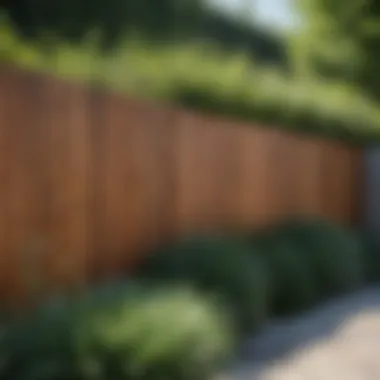

Regardless of your choices, ensure that the plants are suitable for your local climate to thrive well.
Decorative Elements and Accents
Incorporating decorative elements and accents can significantly enhance the appeal of a small fence. Various techniques can make your fence a standout feature in your garden.
You might consider the following decorative ideas:
- Lighting: Small solar lights can be placed along the fence line. They provide illumination at night, adding a magical touch and extending the usability of your outdoor space.
- Art and Wall Hangings: Attach art or decorative wall hangings to the fence. This personalizes the space and can reflect your style.
- Colorful Paint or Stains: A fresh paint or stain can transform a mundane fence. Choose colors that harmonize with your home and surrounding landscape, thereby enhancing the overall aesthetic.
- Seasonal Decorations: Consider adding seasonal decorations, such as wreaths or garlands, to keep the look fresh and inviting throughout the year.
Ultimately, these enhancements can elevate not just the look of the fence but the entire garden, creating a cohesive and appealing outdoor environment.
Maintenance and Care
Maintenance and care are crucial when it comes to ensuring the longevity and aesthetic appeal of a small fence in your front garden. A well-maintained fence not only enhances the overall beauty of your property but also serves its fundamental purpose effectively. Regular upkeep can prevent costly repairs and prolong the life of your fence, making it a wise investment for any homeowner. Failing to maintain your fence could lead to issues such as rot, rust, or fading, which detracts from its appeal and functionality.
Routine Checkpoints
Establishing routine checkpoints is essential for effective fence maintenance. These are crucial tasks that homeowners should integrate into their seasonal schedules. Here are a few key checkpoints to consider:
- Visual Inspections: Regularly walk around your garden to examine the fence. Look for signs of wear and tear, such as cracks, peeling paint, or rust spots.
- Stability Assessment: Gently push on the fence to ensure it remains stable. Any significant movement can indicate underlying issues such as shifting ground or weakened posts.
- Hardware Check: Ensure that all screws, nails, and hinges are intact and secure. Replace any missing or damaged hardware promptly to maintain functionality.
By committing to these simple, routine inspections, homeowners can address minor issues before they escalate into major problems.
Cleaning and Repairs
Cleaning and repairs are vital components of fence maintenance. Regular cleaning helps preserve the fence’s materials and appearance, while timely repairs prevent damage from worsening.
- Cleaning Techniques: Depending on the material of your fence, the cleaning methods may vary. For wooden fences, use a mild soap solution and a soft brush to remove dirt and mildew. Vinyl fences can often be cleaned with a garden hose and a non-abrasive cleaner. Metal fences typically require a scrub with a rust-inhibiting product.
- Repairing Damages: After your visual inspections, attend to any identified issues. Replace rotted boards, repair rusted areas with appropriate paint, or reposition any loose panels. Prompt repairs can mitigate further damage, saving time and money in the long run.
Regular care and maintenance will ensure that your small fence continues to enhance your front garden while serving its purpose effectively. Investing time in these practices leads to a beautiful and functional outdoor space.
Common Challenges
One major consideration is boundary disputes. These often occur when neighbors have differing opinions about property lines. Disputes can lead to tension and even legal complications, which can sour the experience of enjoying a new garden feature. Another challenge involves weather resilience. Different materials and designs respond uniquely to environmental conditions. Rigorously assessing these factors is crucial for ensuring that your fence remains intact and visually appealing despite changing weather patterns.
"Taking the time to address challenges like boundary disputes and weather resilience can transform your fencing project into a true success story."
Addressing Boundary Disputes
Boundary disputes are a common issue that can emerge when installing a small fence. These disputes typically arise from unclear property lines. To mitigate potential conflicts, it is vital to conduct thorough research before installing your fence. Here are several steps to consider:
- Survey your property: Hiring a professional surveyor can give you accurate boundaries. This helps avoid encroaching on a neighbor's land.
- Communicate with neighbors: Engage in friendly discussions with nearby residents. Inform them of your plans and consider their input. Understanding their perspective might prevent misunderstandings.
- Check local zoning laws: Ensure your planned fence complies with town or city regulations. Understanding local rules is essential before construction begins.
These steps not only protect your investment but also foster a positive relationship with neighbors. Clear communication goes a long way in building trust and avoiding conflicts.
Weather Resilience
Weather resilience is another critical factor to consider when incorporating a fence into your front garden. Various materials react differently to weather extremes like rain, snow, heat, and wind. This variability can impact the fence's appearance and longevity. Here are some considerations:
- Material choice: Selecting the right material plays a significant role. For instance, vinyl fences are known for their durability and resistance to moisture. In contrast, wooden fences may require treatment for water and insect resistance.
- Design considerations: The design of the fence should account for wind resistance. Taller options may need added stability to withstand strong gusts.
- Routine maintenance: Regular inspection and maintenance can extend the lifespan of your fence. This can include cleaning, sealing, or making minor repairs to prevent extensive damage.
By addressing weather resilience early on, homeowners can ensure their fence remains functional and attractive through various conditions. A well-constructed and maintained fence can significantly enhance the garden's appeal and comfort.
Final Thoughts
Evaluating the Impact of a Small Fence
Evaluating the impact of a small fence can involve examining various factors, including its contribution to privacy, security, and garden design. The right fence can create a sense of enclosure, making your outdoor space feel more intimate. This psychological benefit complements the aesthetic change that a fence introduces. Publicly visible areas often require a level of protection against wandering pets or children, which a fence effectively provides.
Moreover, a well-chosen fence contributes to the landscape theme of your garden. Whether it's contemporary or traditional, fencing options like wooden pickets or metal railings can harmonize with your existing design. Selecting the right height and material can also enhance the overall curb appeal of your home, potentially increasing its value.
The impact of a small fence is multifaceted. It straddles the line between utility and aesthetic appeal, offering not just boundaries but also a defined style.
Creating a Harmonious Front Garden
Creating a harmonious front garden involves thoughtful integration of all elements, including the fence. A small fence should complement plants, walkways, and other structures in your garden rather than detract from them. To achieve this, consider the line and layout of your fence, making sure it flows well with your existing landscaping.
Coordinating colors is important. For a modern home, crisp whites or sleek grays can enhance the contemporary feel. If your garden is more rustic, warmer wood tones or wrought iron might create a more inviting atmosphere. Additionally, consider the plants around the fence. Climbing flowers or hardy shrubs can soften the look of a fence, providing a more integrated appearance.
Here are some tips for harmony:
- Materials: Use materials that match the style of your home.
- Colors: Choose colors that blend with your garden's palette.
- Spacing: Maintain enough space between the fence and plants to avoid overcrowding.
With these considerations, a small fence transforms from a mere boundary into a vital element of your front garden’s composition.
